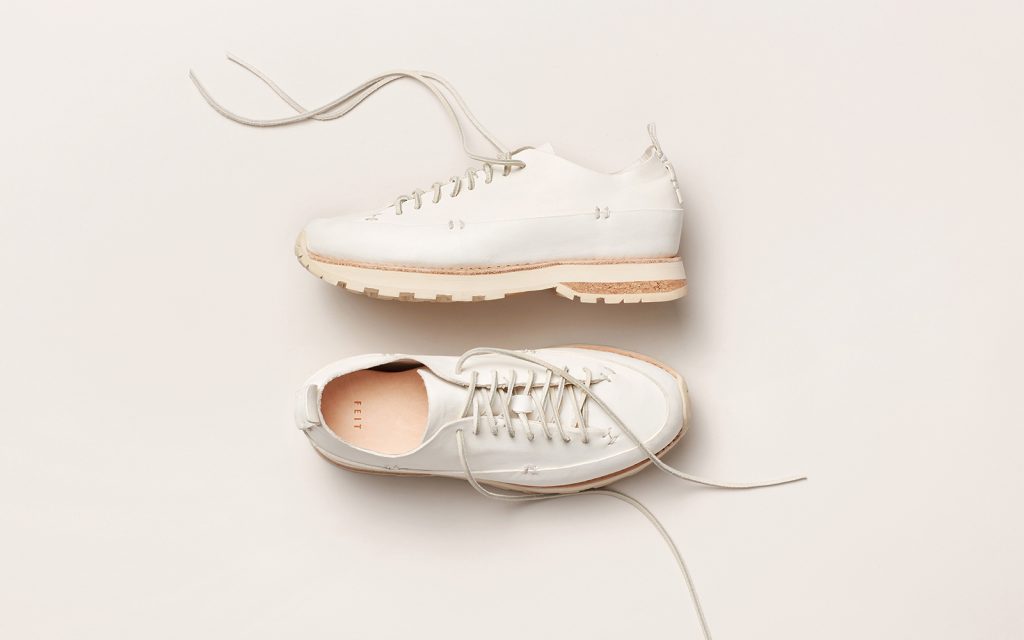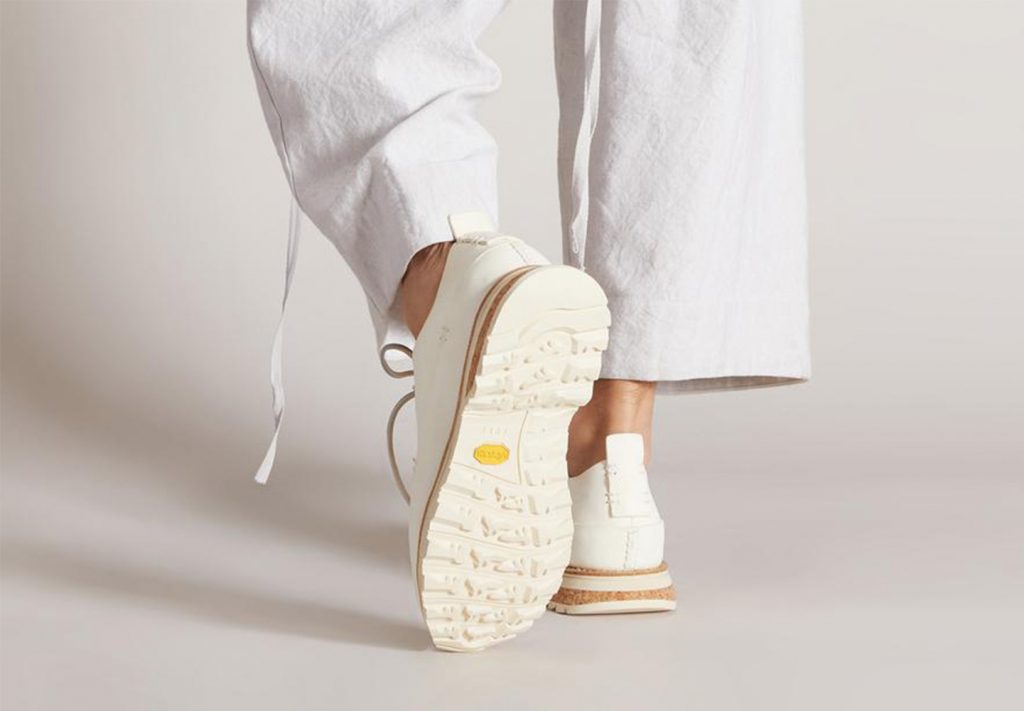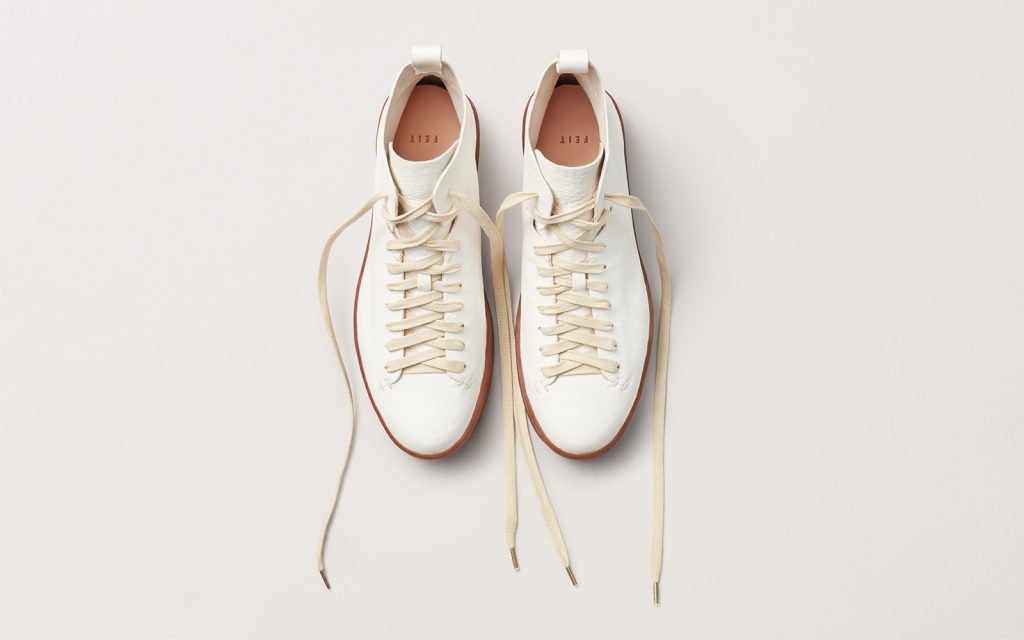FEIT’s Sporty SS20 Silhouettes Made From Natural Materials
Each handmade by a single craftsman, these sneakers employ long-lasting materials and offer plenty of natural benefits

CH favorite FEIT approached their collection of SS20 sneakers through the goal of emphasizing craftsmanship. Most performance sneakers employ plastics, synthetic materials and artificial ways of replicating the innate abilities of natural materials. Plus, most of us wearing these high-performance models never truly push them to the extreme limits for which they’re designed.

“All athletic footwear is made predominantly via three things,” FEIT founder Tull Price explains. “Automation, machinery, plastics or synthetics.” When he started FEIT, he says, “I was thinking of all of the hundreds of millions of sneakers these big athletic companies were creating and where it all ended up. It just felt like it wasn’t a sustainable model—at least it wasn’t how I wanted to be involved in the business. And so many athletic shoes are purely worn for fashion.”

Instead of turning to running or tennis models (which usually employ oil-derived plastics and synthetics, with the exception of a few releases), Price suggests customers consider FEIT’s newest offerings. “They use all sorts of techniques to say, ‘This pair is for basketball’ or ‘This pair is for running’ just in order to be able to market and sell more products, so they can manufacture things more quickly and more cheaply,” Price continues. “I went to the opposite end of the scale and said, ‘What would be the absolute best product to wear? How would that be made? What would that be made from?'”

The newest sports-influenced silhouettes include the second generation of the beloved Biotrainer, the Biotrainer 2.0, a Lugged Runner inspired by hiking shoes, and a Hand-Sewn High Latex shoe that plays off the classic high-top. The first two employ vegetable tanned elk leather uppers, and the latter uses semi Cordovan leather. The Biotrainer 2.0 and the High Latex feature a cork midsole and a natural latex outsole; the Lugged Runner relies on the same cork midsole, a bamboo shank and a custom lugged rubber outsole made in collaboration with Vibram.

“These are 100% athletic silhouettes. You could use it if you really wanted to, in the gym, but that’s not what they’re built for,” Price tells CH. Each is an “athletic silhouette that is made from 100% natural materials. There is zero synthetic and zero plastic in the shoes whatsoever. They’re also handmade— this detail applies to all of FEIT’s footwear. There are also a whole variety of benefits you get: you could wear these shoes all summer, without socks, and they’re not going to smell.” Price explains that the elk leather breathes better than mesh-patterned plastics or vinyls. Using leather also ensures that sweat does not penetrate the materials and dry there, which causes unsavory odors to arise.

“They’re totally breathable, your feet don’t get hot in them, and they’re really, really comfortable,” Price continues. “It’s a high-quality material, and it’s better for your skin, and it is a one-piece upper, which molds and breaks the way your feet do. They also age really beautifully. I know some people put their sneakers in boxes and keep them for a long time, but if you wear them a lot they eventually get dirtier and dirtier. They go from looking nice to eventually being something you’ll not really wear anymore. And then they get thrown away. [Ours] get dirty, and you might get frustrated for a little bit, but then as it gets older it gets more and more beautiful. They’re shoes that you can wear for a long time. Instead of having something that you wear for a season or two and then forget about, you have something that can be pulled back out or constantly worn for five years or longer.”

From afar, FEIT’s new sneakers reference silhouettes popularized by larger sports brands. Up close, the sneakers have an artistic quality that’s bestowed upon them by the sole craftsman tasked with building them. From applying the custom-made FEITxVibram outsole to hand-assembling the brand’s proprietary Goodyear construction (a procedure that uses water-based glue to apply the upper to the sole and ensures the sneaker can be resoled should issues arise), the wonderfully human process produces an overall appearance that cannot be replicated on a scale larger than their current editions—which sometimes are as few as 40 or as many as 204.

“Sneaker companies are always battling with this idea of ‘How do we sell more?’ It always gets taken out of the materials. Even though many brands make amazing looking products, the materials have to be very, very cheap and they have to be perfectly consistent. To run them through their machines and through testing they can’t have any irregularities—there can really be nothing natural left. We think the opposite: the natural is beautiful,” Price finishes.
Images courtesy of FEIT












